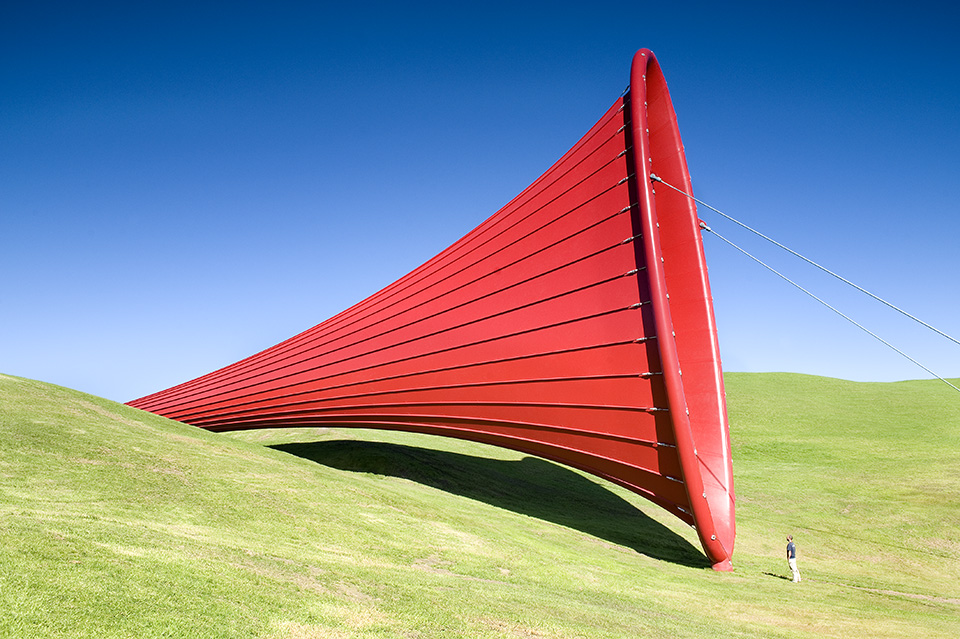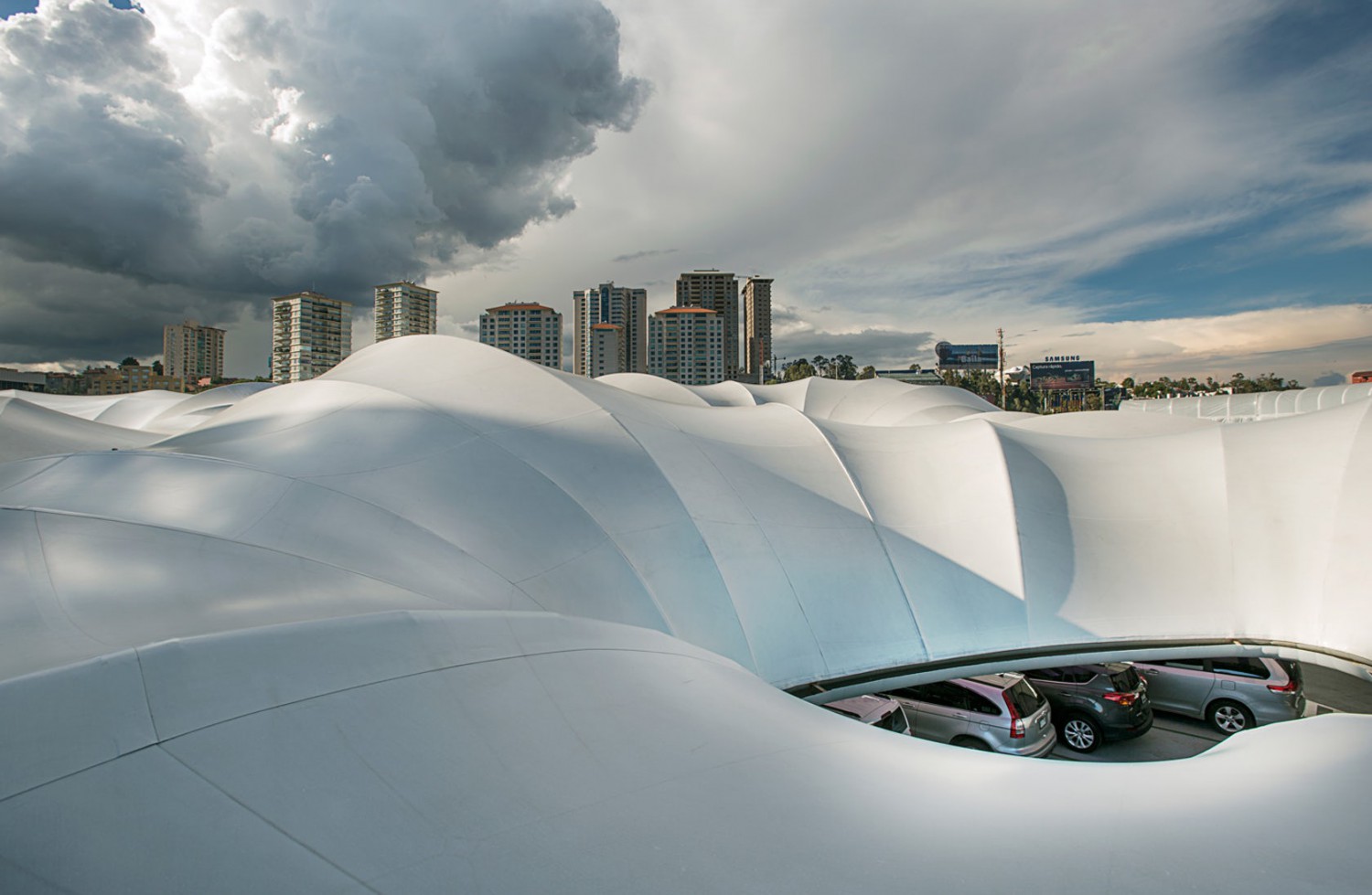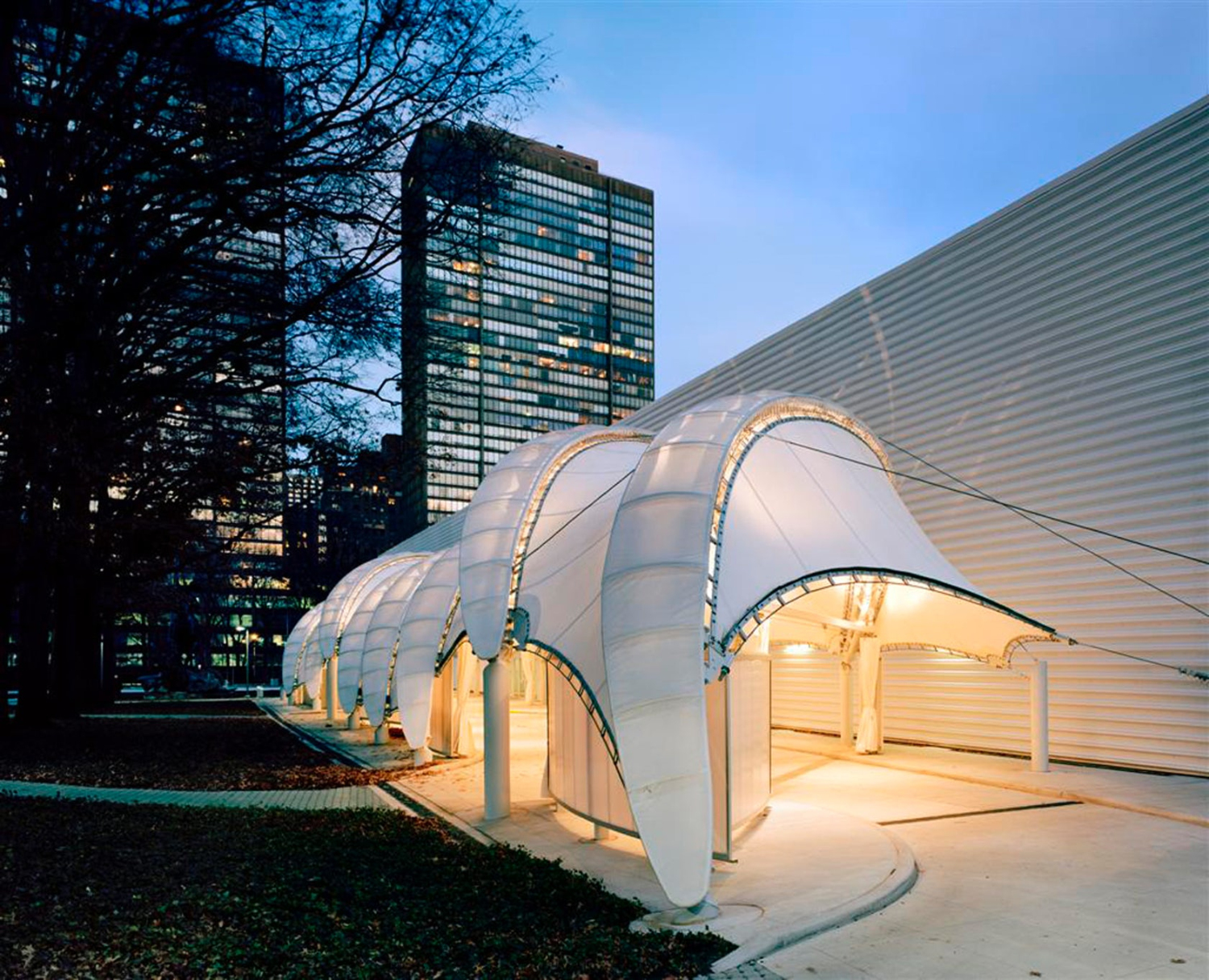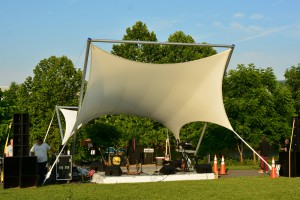Tensile Fabrics knowledge (part 2)
18/02/2020 | Blog
Tensile fabric structures have existed for a very long time in the form of simple tent-like shelters; together, guy ropes and tent poles provide pre-tension to a fabric, allowing the greater structure to withstand the loads of wind, rain and snow.
Aesthetics
Size:
Tensile fabric can be manufactured in virtually any size and shape. When thinking about size, it is important to consider how fabrics will stretch when they are pulled to create tension. The size of each panel is typically derived from a computer generated model, which is then modified to account for the way fabric will change during installation.
Color:
When it comes to tensile fabrics, white is by far the industry standard. By using a light colored fabric, you can effectively reduce the amount of heat that is attracted to the building, making it a more sustainable choice. Additionally, when working with PTFE, white can be a beneficial choice performance-wise, since the material is naturally bleached by UV light. That being said, many manufacturers offer tensile fabrics in a wide variety of vibrant colors.Translucency:
PVC coated polyester can be manufactured with varying levels of transparency and light transmission, ranging from very transparent to completely opaque. PTFE varies in translucency, with light transmission commonly ranging from 7% to 15%; the quality of light that is transmitted is color balanced, diffused and free of shadows and glare. In many cases, ETFE is very transparent and has an approximate light transmission of 85%. However, ETFE foil can be fritted similarly to laminated glass products, to allow for greater opacity. In general, translucent fabric membranes can be harnessed to softly diffuse light and create stunning naturally lit spaces.
Performance
Thermal Performance:
According to Architen Landrell, “Long gone are the days when fabric structures were only used in large unheated spaces.” Thermal, a fabric by Architen Landrell uses multiple layers to form an external envelope that can achieve U-Values up to 0.18 for virtually any building, overcoming the thermal limitations previously associated with tensile fabrics.Several other manufacturers use Aerogel — today’s highest performing thermal insulation — in order to increase the thermal insulation value of tensile fabric structures. In projects where thermal insulation is a core tenant of success, speak to your manufacturer early on about opportunities for insulated tensile fabrics.

Acoustics:
Similar to thermal insulation, tensile fabric structures are available with acoustical liners, that can effectively alter reverberation time and increase speech intelligibility within a space.Maintenance:
Tensile fabric structures are lauded for their ease of maintenance. That said, many manufacturers, including Architen Landrell, recommend that fabric structures undergo an annual inspection, in order to ensure that every part is functioning properly.Rainwater:
Tensile fabric structures should be designed to channel water to the perimeter, and run off naturally. Many manufacturers can also installed gutters, which will redirect any water to the ground and away from the structure.Snow:
Snow loading can be a challenging aspect of tensile structure, as snow will not simply flow off the structure in the same way that water will. Some structures, which are prone to ponding harness integrated heating to melt any show that tries to settle in.Source: Architizer





